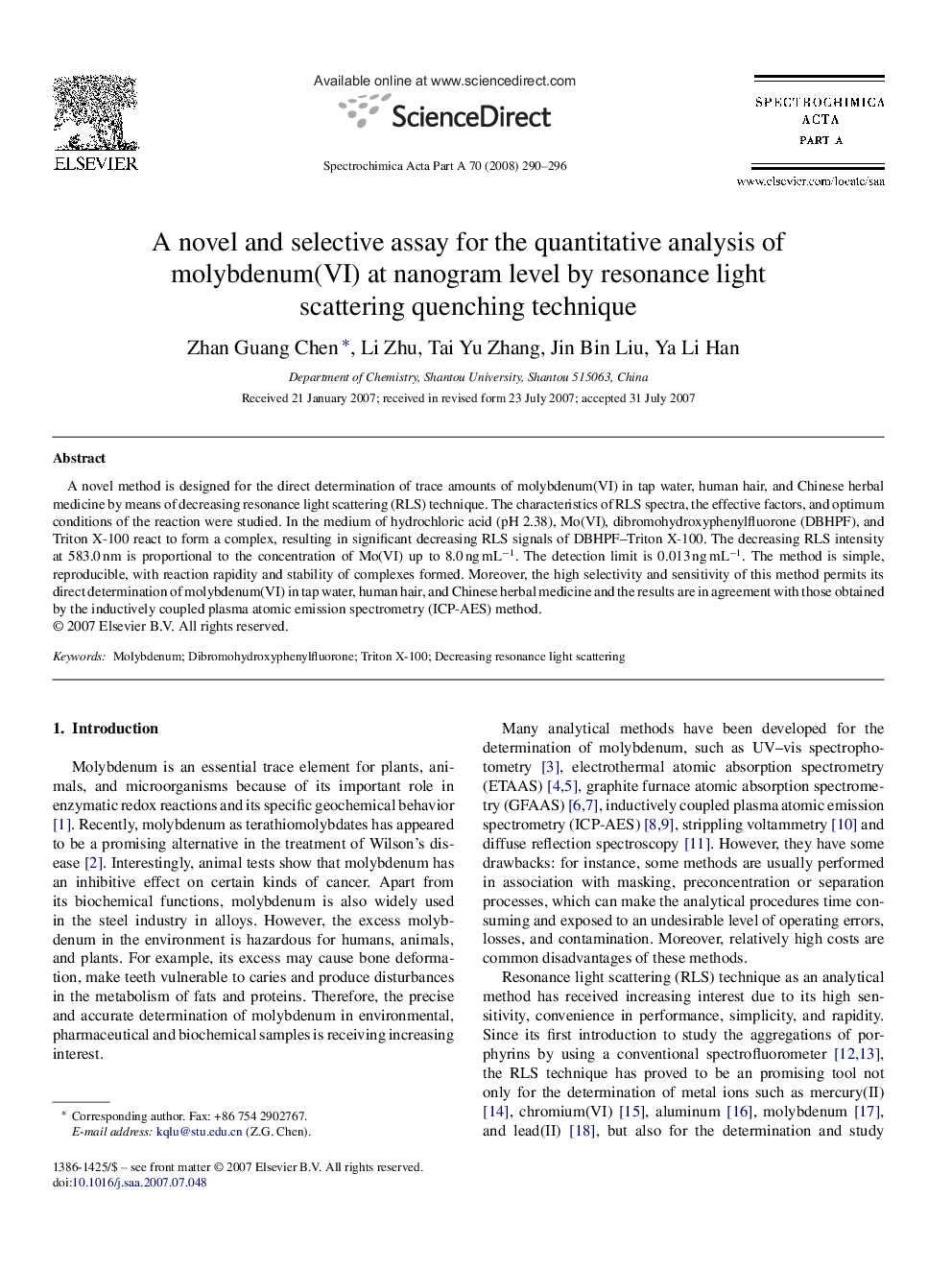| Article ID | Journal | Published Year | Pages | File Type |
|---|---|---|---|---|
| 1237714 | Spectrochimica Acta Part A: Molecular and Biomolecular Spectroscopy | 2008 | 7 Pages |
Abstract
A novel method is designed for the direct determination of trace amounts of molybdenum(VI) in tap water, human hair, and Chinese herbal medicine by means of decreasing resonance light scattering (RLS) technique. The characteristics of RLS spectra, the effective factors, and optimum conditions of the reaction were studied. In the medium of hydrochloric acid (pH 2.38), Mo(VI), dibromohydroxyphenylfluorone (DBHPF), and Triton X-100 react to form a complex, resulting in significant decreasing RLS signals of DBHPF-Triton X-100. The decreasing RLS intensity at 583.0 nm is proportional to the concentration of Mo(VI) up to 8.0 ng mLâ1. The detection limit is 0.013 ng mLâ1. The method is simple, reproducible, with reaction rapidity and stability of complexes formed. Moreover, the high selectivity and sensitivity of this method permits its direct determination of molybdenum(VI) in tap water, human hair, and Chinese herbal medicine and the results are in agreement with those obtained by the inductively coupled plasma atomic emission spectrometry (ICP-AES) method.
Keywords
Related Topics
Physical Sciences and Engineering
Chemistry
Analytical Chemistry
Authors
Zhan Guang Chen, Li Zhu, Tai Yu Zhang, Jin Bin Liu, Ya Li Han,
